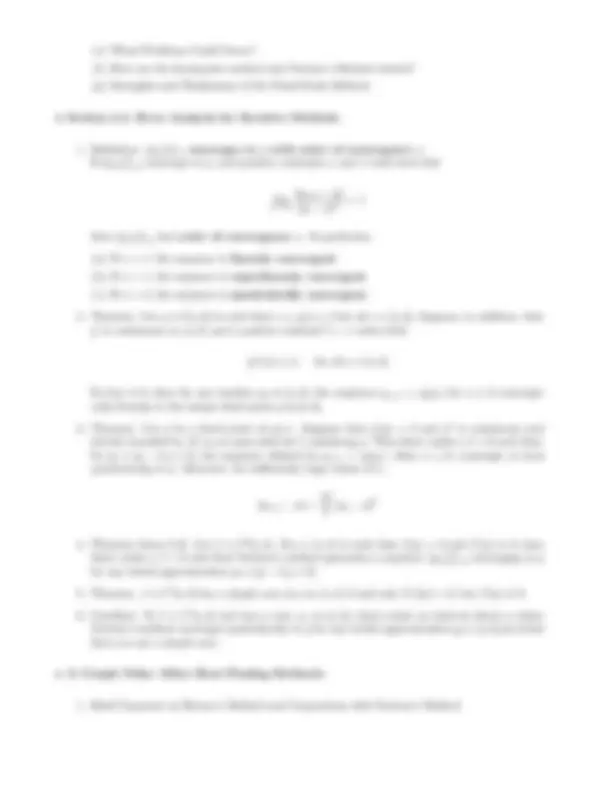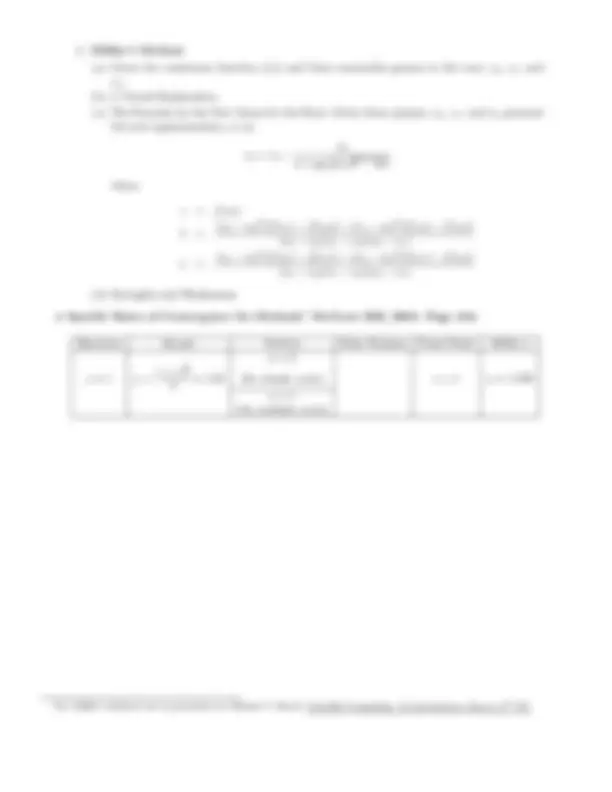




Study with the several resources on Docsity

Earn points by helping other students or get them with a premium plan


Prepare for your exams
Study with the several resources on Docsity

Earn points to download
Earn points by helping other students or get them with a premium plan
Community
Ask the community for help and clear up your study doubts
Discover the best universities in your country according to Docsity users
Free resources
Download our free guides on studying techniques, anxiety management strategies, and thesis advice from Docsity tutors
An in-depth exploration of root finding algorithms, specifically newton's method, secant method, and method of false position. It covers the problem of finding roots of continuous functions, the visual explanation and derivation of formulas for new guesses at the root, algorithms for each method, examples, and strengths and weaknesses. Additionally, it discusses the relation to fixed-point methods and existence and uniqueness theorems.
Typology: Study notes
1 / 4

This page cannot be seen from the preview
Don't miss anything!



MATH 441/541 - Numerical Analysis Fourth Meeting: Root Finding Algorithms (cont.) Thursday, September 13 th, 2007
(e) The Relation to the Secant Method (f) An Example: Use Newton’s Method with initial guess p 0 = 2 to find an approximation to the solution to x cos(x) = 3 + 8x − x^3 correct to three decimal places. (g) What Problems Could Occur? (h) Strengths and Weaknesses of Newton’s Method:
for all x and y in [a, b], (i.e. g is a contraction mapping on [a, b]), then the fixed point p is unique. ii. Text Theorem: If, in addition to the existence criteria, g′(x) exists on (a, b) and a positive constant d < 1 exists with |g′(x)| ≤ k for all x ∈ (a, b)
then the fixed pint in [a, b] is unique. (c) Fixed Point Theorem: Let g ∈ C[a, b] be such that a ≤ g(x) ≤ b for all x ∈ [a, b]. Suppose, in addtion, tht g′^ exists on (a, b) and that a constant 0 < k < 1 exists with |g′(x)| ≤ k for all x ∈ (a, b) Then, for any number p 0 in [a, b], the sequence defined by pn = g(pn− 1 ), n ≥ 1 converges to the unique fixed point p in [a, b]. Also, the bounds for the error involved in using pn to approximate p are given by: |pn − p| ≤ kn^ max{p 0 − a, b − p 0 } and |pn − p| ≤ k
n 1 − k |p 1 − p 0 |, n ≥ 1
(d) An Example: Verify that the function f (x) = 12 e−x^ has a unique fixed point on [0, 1]. Use the Fixed-Point Iteration Method with initial guess p 0 = 0.9 to find an approximation to the true fixed point correct to three decimal places.
x 3 = x 2 − 2 c b + sgn(b)
b^2 − 4 ac where
c = f (x 2 ) b = (x 0 − x 2 )^2 (f (x 1 ) − f (x 2 )) − (x 1 − x 2 )^2 (f (x 0 ) − f (x 2 )) (x 0 − x 2 )(x 1 − x 2 )(x 0 − x 1 ) a = (x^1 −^ x^2 )
(^2) (f (x 0 ) − f (x 1 )) − (x 0 − x 2 ) (^2) (f (x 1 ) − f (x 2 )) (x 0 − x 2 )(x 1 − x 2 )(x 0 − x 1 ) (d) Strengths and Weaknesses
Bisection Secant Newton False Position Fixed Point M¨uller’s α = 2 α ≈ 1 α = 1 +^
2 ≈^1.^62 (for simple roots)^ α^ = 1^ α^ ≈^1.^839 α = 1 (for multiple roots)
(^1) For M¨uller’s Method rate in particular see Michael T. Heath. Scientific Computing: An Introductory Survey, 2nd (^) Ed.